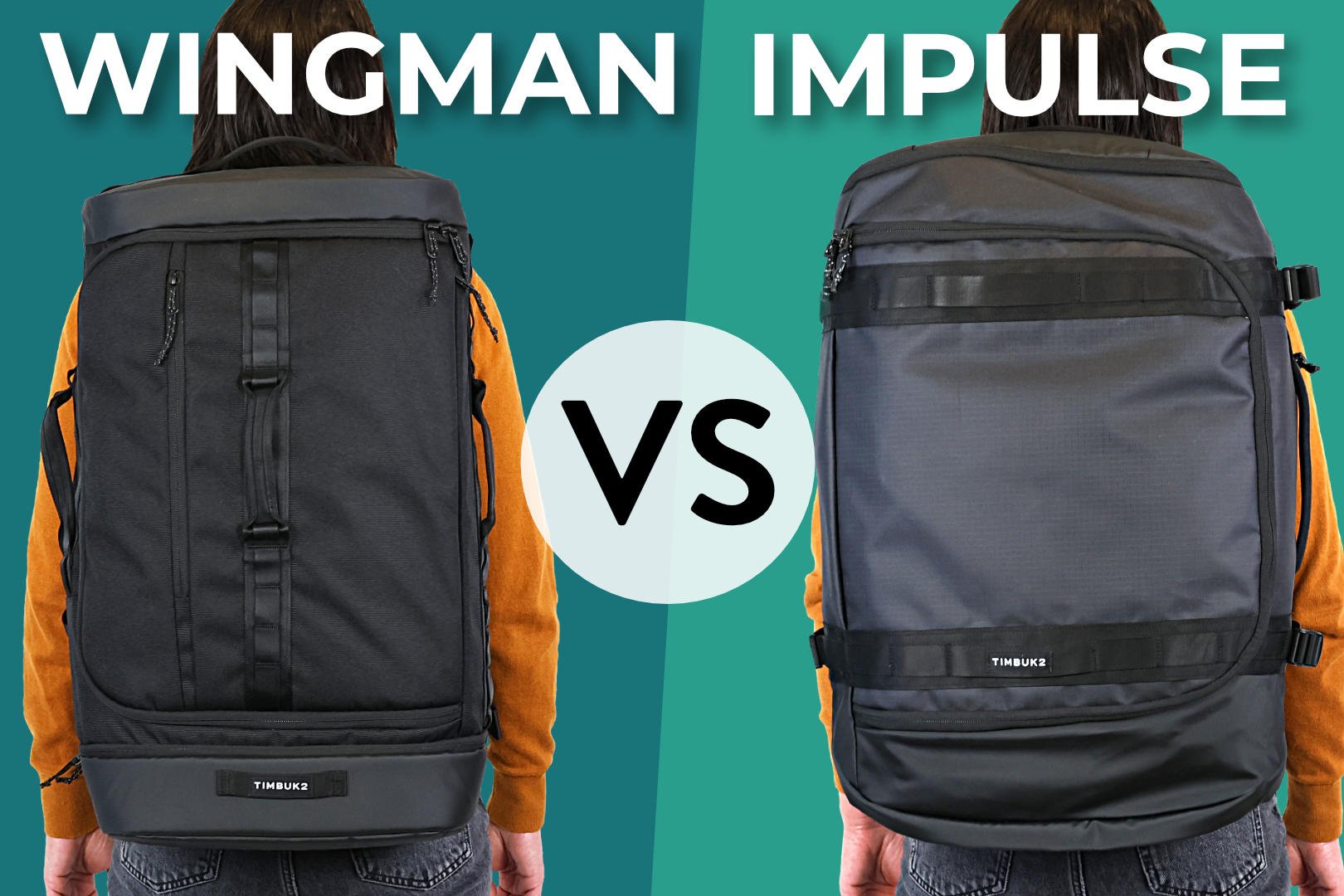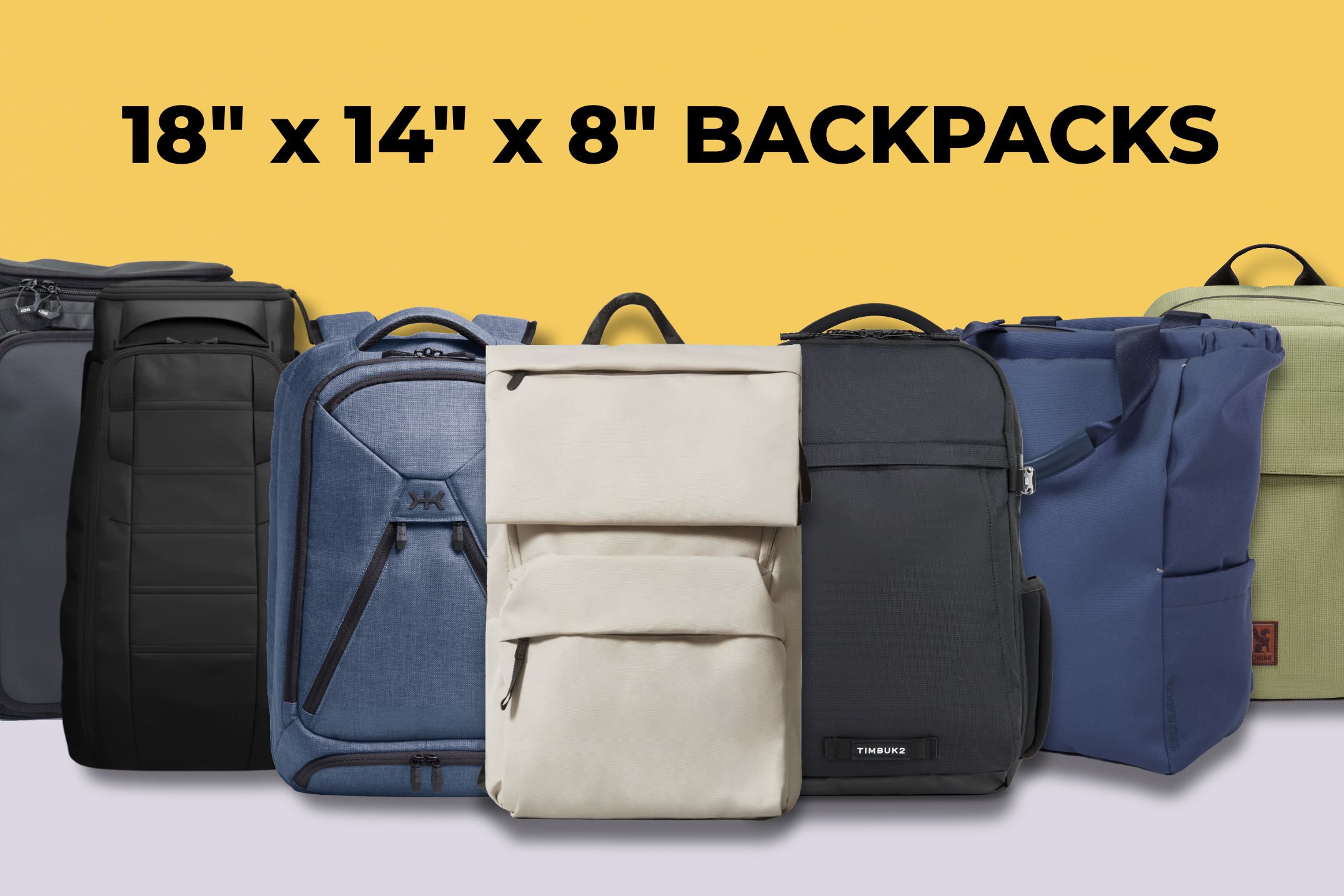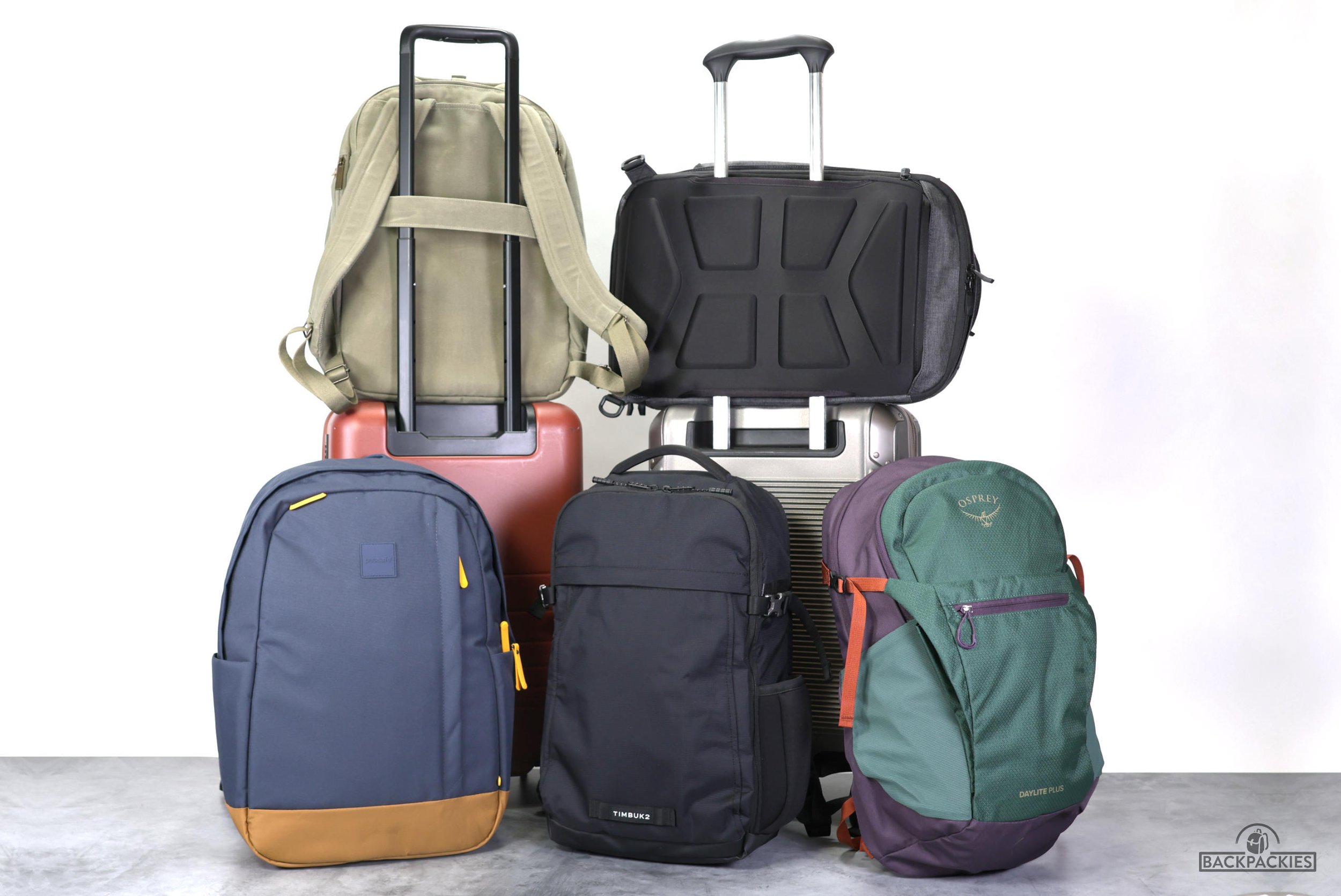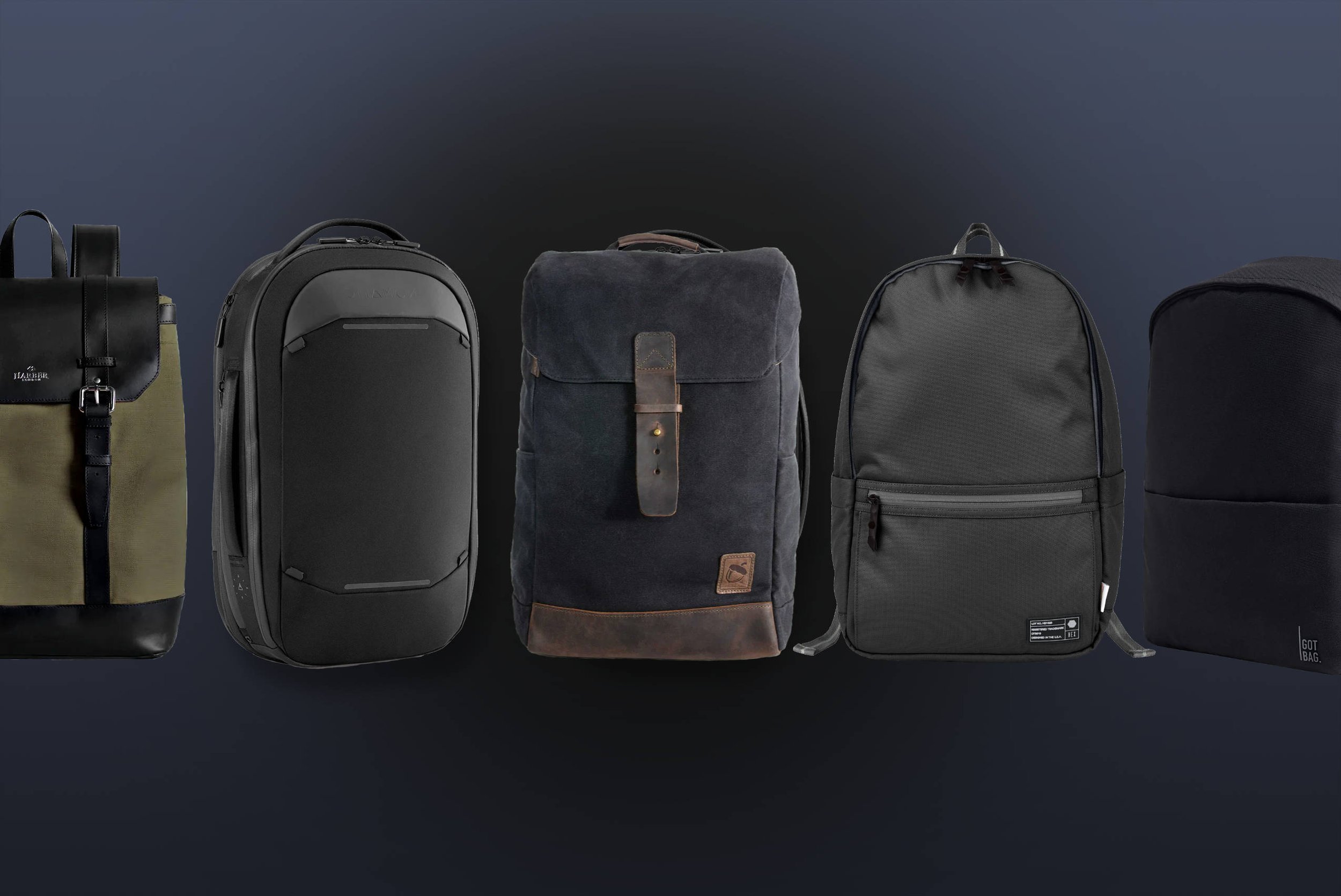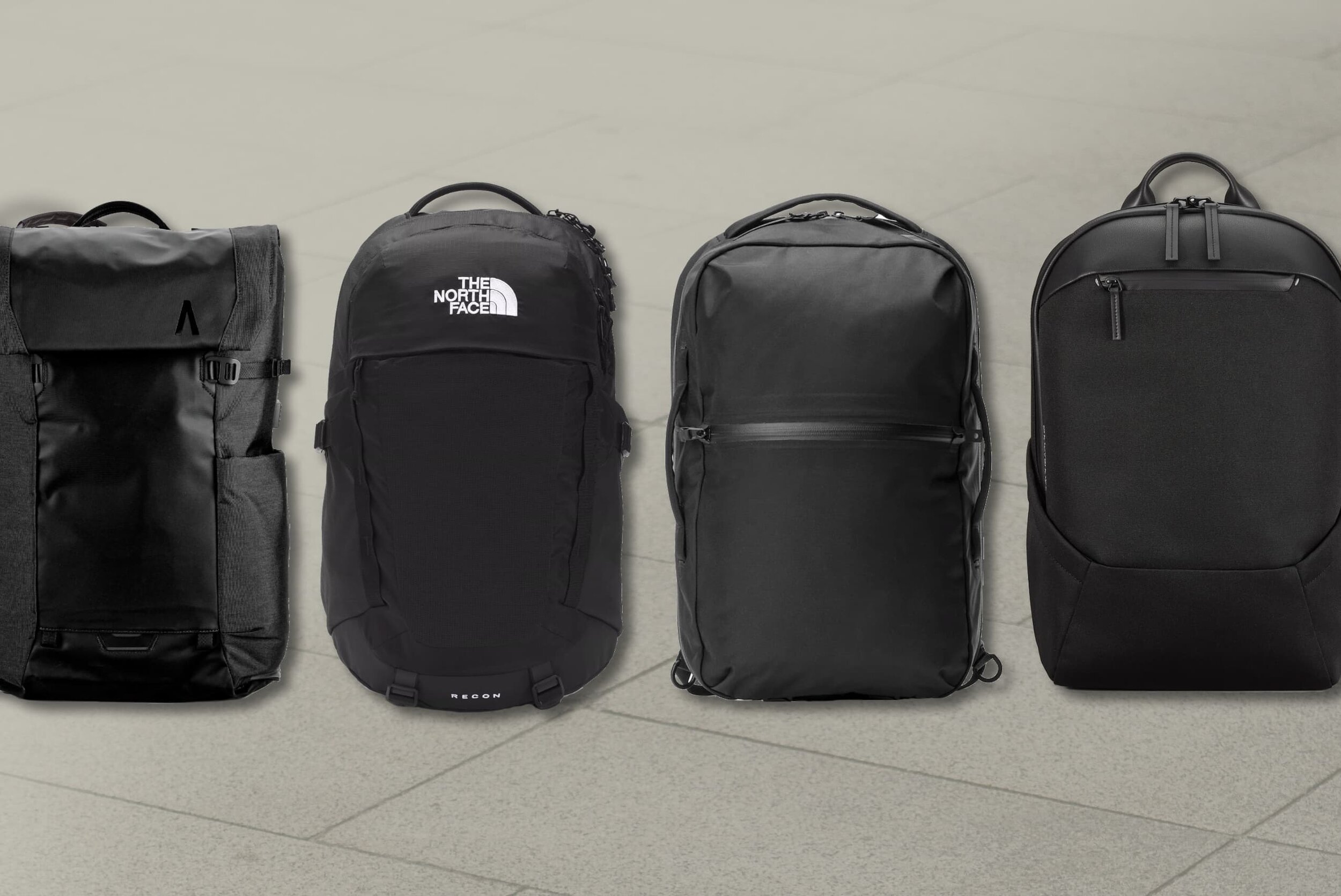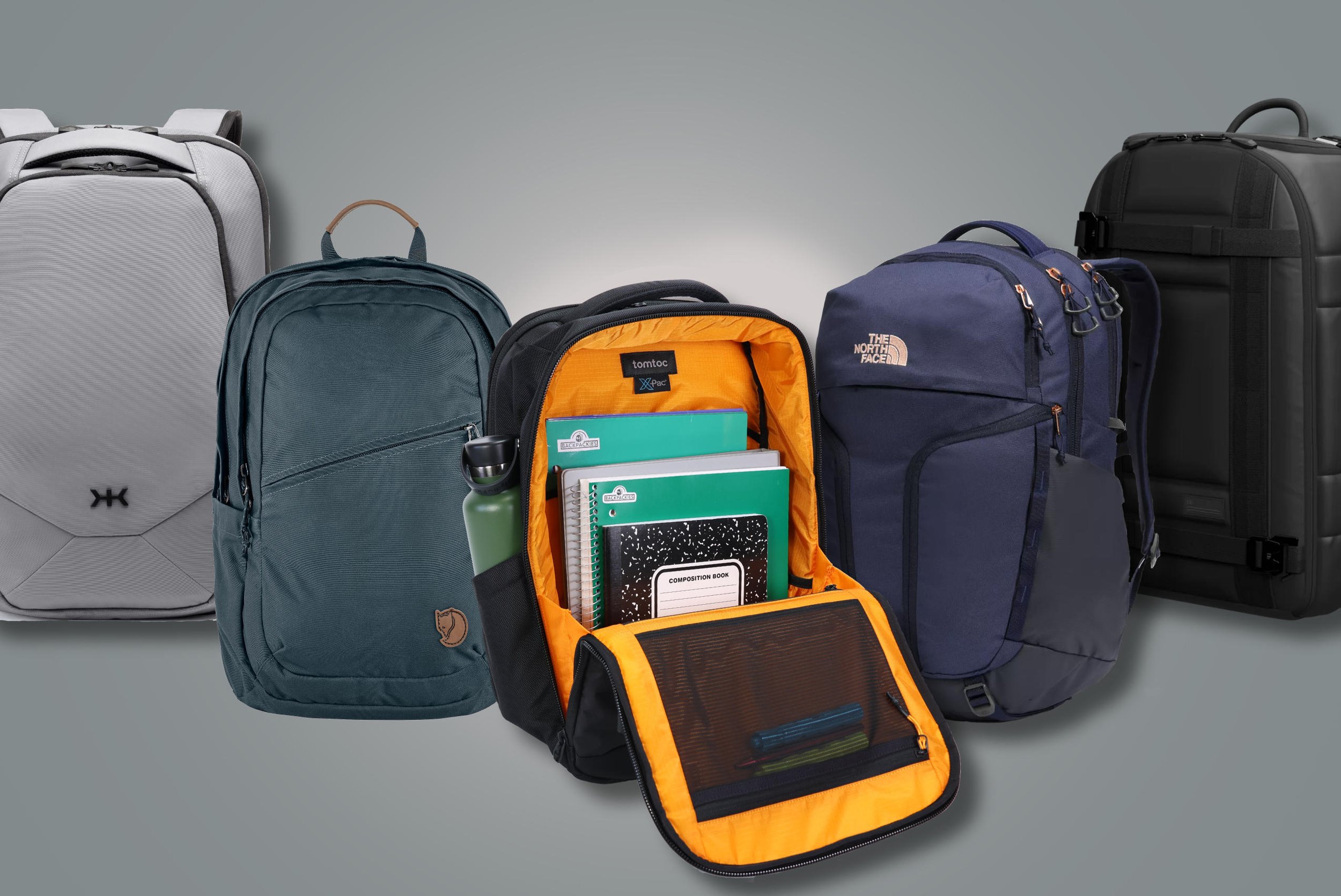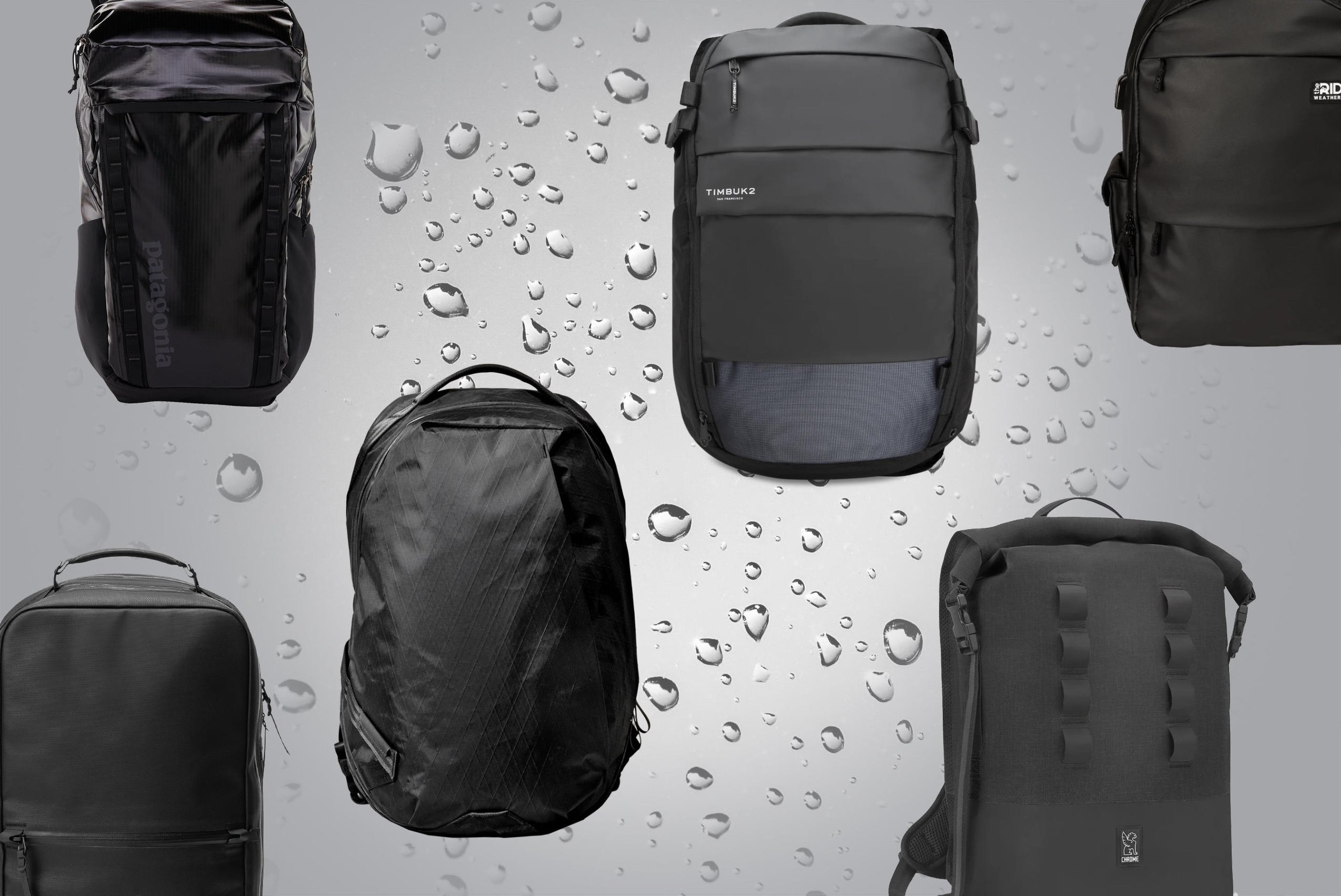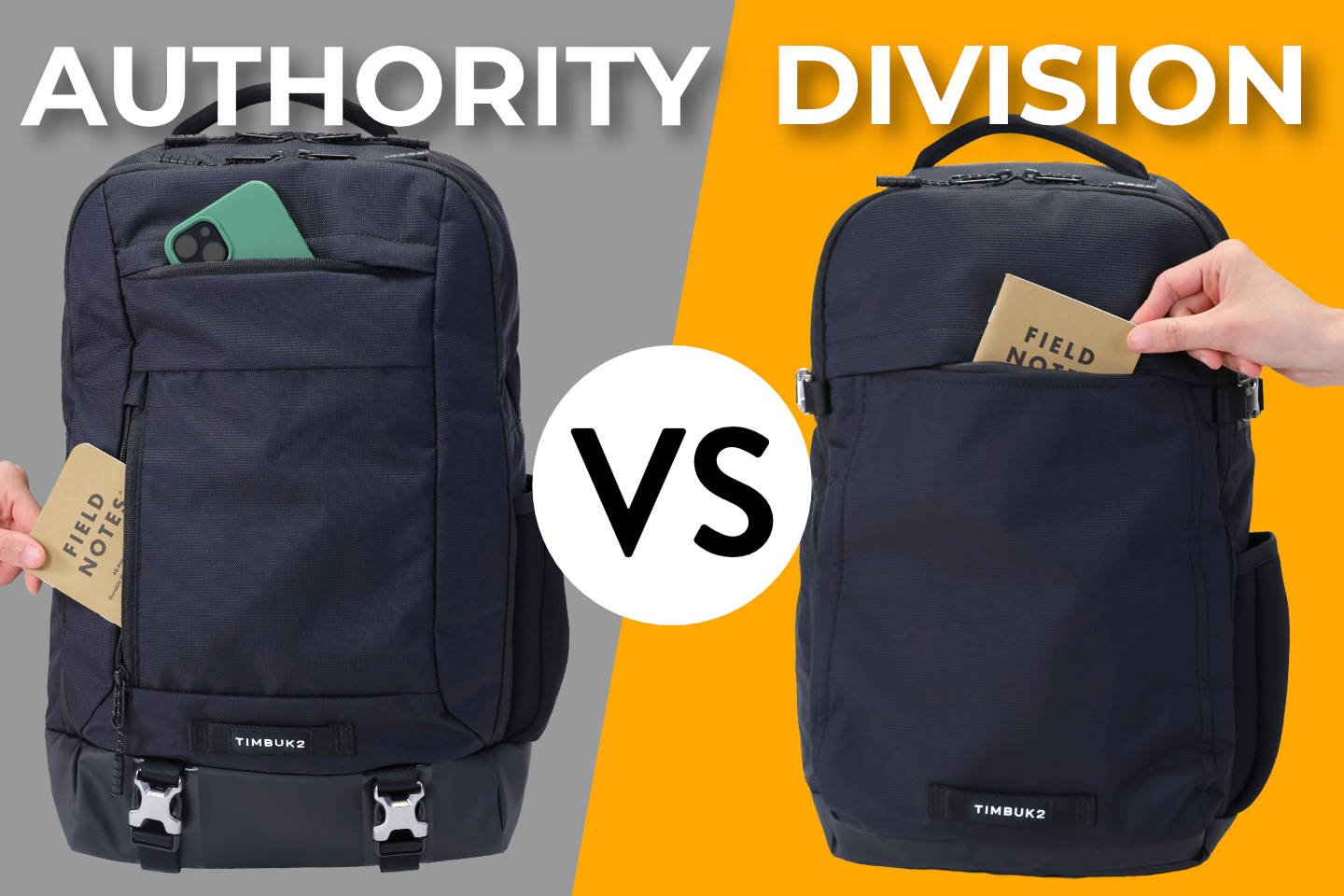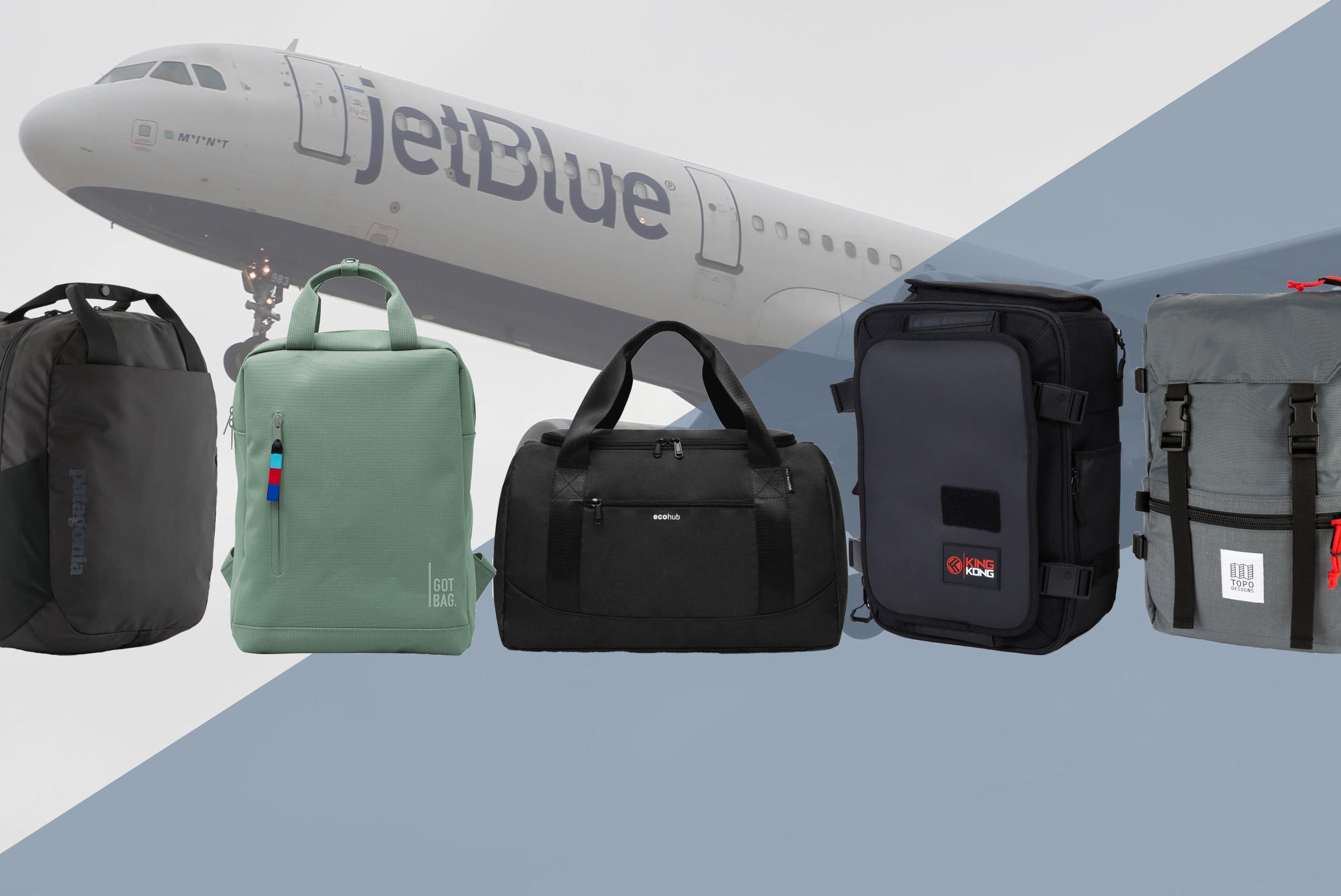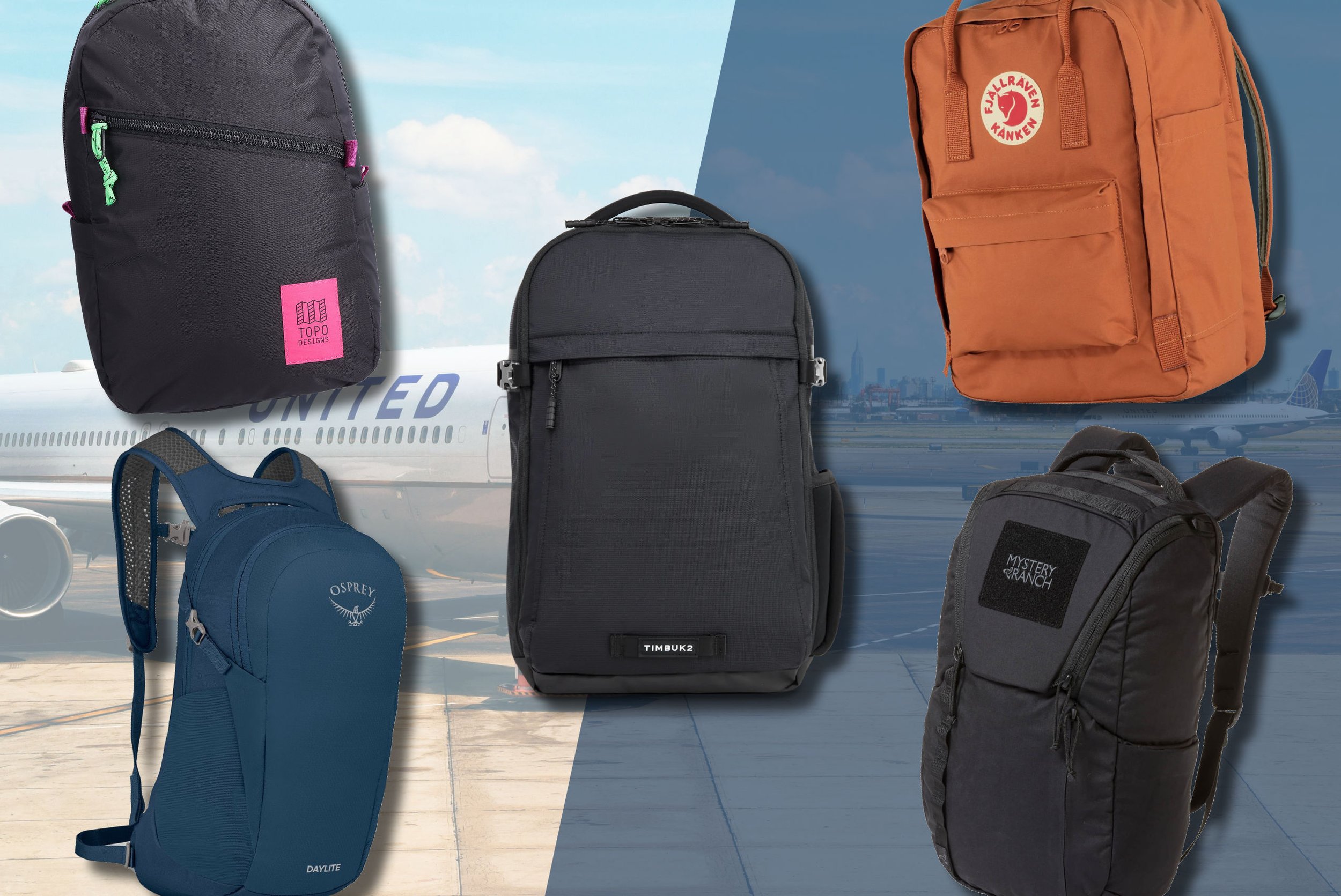Timbuk2 Wingman vs Impulse Travel Bags - Which is Better?
When comparing the Timbuk2 Wingman vs. Impulse, it might seem like the biggest difference is their size, with the Wingman offering 38.3 liters and the Impulse providing 45 liters.
But after testing each backpack, we found that there’s much more to these convertible travel bags than just capacity. Both bags offer unique features that cater to different types of travelers. In this guide, we’ll break down 8 key differences that will matter most when choosing your next carry-on bag.
Video Review
Quick Specs
 |
 |
|
|---|---|---|
| Volume | 38.3L | 45L |
| Materials | 900D eco polyester 600D Non-P PVC |
450D polyester ripstop 600D Non-P PVC |
| Dimensions | 22" x 12.6" x 7.87" | 22.4" x 13.4" x 6.18" |
| Weight | 4.0 lbs | 3.7 lbs |
| Laptop Storage | 17" Laptop Compartment 13" Laptop Sleeve |
17" Laptop Sleeve |
| Convertible | Backpack, Duffel, Shoulder Bag | Backpack, Duffel |
| Chest Strap | Yes | Yes |
| Hip Belt | Yes | Yes |
| Price |
Timbuk2 Wingman vs Impulse Backpack Duffel
Fit and Comfort
Both the Timbuk2 Wingman and Impulse are designed to fit most carry-on bag airline size limits. Although both bags are very similar in height and depth, you’ll notice that the Impulse is a lot wider.
Timbuk2 offers many of the comforts expected in a travel backpack, such as adjustable shoulder straps, sternum straps, and hip belts. However, neither bag includes advanced features like load lifters or adjustable back panels, as Timbuk2 chose to keep the designs simple.
Timbuk2 Wingman vs Impulse sternum strap and hip belt
One small difference is that the Impulse includes tiny hip belt pockets, which the Wingman lacks. However, these hip belt pockets are so small that they’re only useful for holding items like a credit card or coins.
Difference #1: Back Panel Design
A major comfort difference lies in the back panels. The Wingman features a flat foam back panel, while the Impulse opts for a more traditional mesh-padded back panel. While we found the Wingman comfortable overall, the Impulse offers much better airflow, making it a much better backpack for wearing in warm weather.
Timbuk2 Wingman vs Impulse - Wingman has flat back panel and Impulse has padded mesh
Difference #2: Impulse Hip Belt Adjustment
The Impulse offers a fit adjustment with its hip belt, featuring two loops to help you customize the hip belt height for a better fit. The Wingman’s hip belt sits lower, which could be a problem for shorter people. In our tests with a wearer height of 5'6", the Impulse's adjustable hip belt provided a much better and more comfortable fit.
Carry Options
Timbuk2 has designed both the Wingman and Impulse as convertible backpacks. Both bags allow you to stow away the backpack straps and hip belts behind the back panels, making it easy to convert them into a duffel bag.
Timbuk2 Wingman vs Impulse as travel duffel bags
Difference #3: Wingman Has More Carrying Versatility
Unlike the Timbuk2 Impulse, the Wingman includes an extra shoulder strap, allowing it to convert into an over-the-shoulder bag. The flat back panel on the Wingman also provides a much cleaner look when it’s not being used as a backpack.
The additional strap on the Wingman gives you three different carry modes: backpack, duffel bag, and over-the-shoulder. In comparison, the Impulse offers only two carrying modes: backpack and duffel bag.
The Wingman also features handles on all sides of the bag, making it easier to grab from an overhead compartment or car trunk. The Impulse is more limited, with just a top and side handle.
Timbuk2 Wingman can convert to over-the-shoulder duffel bag
Pockets and Compartments
The exterior pockets are where we start to see a big difference in travel packing styles between the two bags. The Wingman is clearly designed for travelers who value quick access to smaller items such as a water bottle, passport, headphones, or tech gear while the Impulse takes a more minimalist approach.
Timbuk2 Wingman vs Impulse - comparing top pockets
While both bags feature a top pocket for easy storage, they are very different in design. The Wingman’s smaller, flat top pocket is ideal for storing essentials like a passport, airline tickets, or a phone. In contrast, the Impulse takes a different approach with a massive top pocket, perfect for bulky items like a compressible jacket or large headphones. It even includes a mesh pocket to organize smaller items.
Timbuk2 Impulse vs Wingman - Both bags share a similar long pocket that fits a phone
Both travel bags share a similar long, flat pocket for storing items like a phone or passport. On the Wingman, this pocket is located on the front of the bag, while on the Impulse, it’s found on the side. A nice feature on the Timbuk2 Impulse is the key leash—great for daily use and a welcomed addition in a carryon bag.
Difference #4: Wingman Includes a Water Bottle Pocket
The Wingman comes with an integrated water bottle pocket on the side. We tested it, and it easily fits a 40-ounce Hydroflask bottle. The Impulse, unfortunately, is missing a water bottle pocket. While you could store a water bottle in the large top pocket of the Impulse, you'd better ensure it's tightly sealed to avoid any spills!
P.S. If you carry larger water bottles, check out our list of backpacks with water bottle pockets for more options.
Timbuk2 Wingman vs Impulse - missing water bottle pocket on the Impulse
Laptop Storage
Both the Timbuk2 Wingman and Impulse feature a large laptop compartment against the back panel that can fit up to a 17-inch laptop. Although both bags offer the same amount of padding protection, the Wingman elevates the laptop compartment off the ground by a few additional inches, giving you much better protection from drops.
Timbuk2 Wingman vs Impulse - Both backpacks have a 17 inch laptop sleeve
Difference #5: Wingman Has An Extra Laptop Sleeve
One of the Wingman’s standout features is its second 13-inch laptop sleeve in the front on the bag, a feature that is missing on the Impulse.
Don't carry a second laptop? No worries. This front pocket is highly versatile and works well for quick access to a tablet, e-reader, or even flatter items like a light jacket. Regardless of how you choose to use the second laptop sleeve, it serves as an extra zippered pocket that the Impulse doesn’t offer.
Second laptop sleeve on the Timbuk2 Wingman Travel Backpack Duffel
Main Compartments
As carry-on bags, both the Impulse and Wingman feature a large main compartment. However, the Wingman offers slightly less internal packing space at 38.3L compared to the Impulse’s 45L.
In terms of packing efficiency, both bags work well with packing cubes and can easily be packed for both short and long trips. During our testing, we were able to fit a week’s worth of clothes into both bags.
Timbuk2 Wingman vs Timbuk2 Impulse - inside main compartments
Here are a few small differences inside the main compartments:
The Wingman has one large mesh pocket, while the Impulse offers three smaller mesh pockets. However, the Impulse’s smaller pockets are limited in size—small enough to fit items like a deodorant stick, but not much more.
The Wingman features a stretchy compression panel secured with attachment points, whereas the Impulse has a simple luggage compression strap. The Wingman’s compression panel is more user-friendly, especially if you're packing loose clothes without using compression packing cubes.
Difference #6: Main Compartment Division
One of the biggest differences between the Timbuk2 Impulse and Wingman is how each bag divides its packing space. Both backpacks include a bottom shoe compartment that can be accessed through an external zipper. These compartments are perfect not only for shoes but also for keeping dirty laundry separate during your trip.
The Wingman’s shoe compartment is entirely separate from the main compartment, so it doesn’t take up much space when shoes are placed inside. Unfortunately, the Impulse’s shoe compartment shares space with the main compartment, meaning that it reduces the available packing space when filled. The same goes for the large top pocket on the Impulse, which also bulges into the main compartment when loaded. As a result, the 45-liter capacity of the Impulse is divided between the top pocket, main compartment, and shoe compartment, while the Wingman maintains better separation of compartments.
Timbuk2 Wingman vs Impulse - Impulse shoe compartment takes up space
Difference #7: Impulse has Compression Straps
Another key difference is that the Impulse includes side compression straps, allowing you to adjust the bag’s size based on how much you’ve packed. The Wingman doesn't include compression straps, making the Impulse a better option for travelers who need flexibility with adjusting the bag size.
Materials and Water Resistance
Both backpacks are made with durable materials, and while they differ, the Timbuk2 Wingman and Impulse both offer excellent water resistance. This is thanks to their tops and bottom boots made of waterproof 600D Non-P PVC. If water resistance is a priority, you really can’t go wrong with either bag.
Difference #8: Fabric
The Wingman is made from 900D eco-polyester, a heavy-duty, water-repellent, and durable fabric. In comparison, the Impulse uses polyester ripstop, which is also water-repellent and scratch-resistant.
The main difference here is that the polyester ripstop on the Impulse is easier to wipe clean when dirty, while the eco-polyester on the Wingman is more prone to picking up dirt and pet hair.
Timbuk2 Wingman vs. Impulse: How to Choose?
Timbuk2 Wingman Travel Backpack Duffel
Timbuk2 Impulse Travel Backpack Duffel
Now that we’ve covered the 8 key differences between these two travel backpack duffels, it’s time to decide which bag best suits your needs.
Choose the Wingman if you need more versatility in how you carry your bag. The Wingman’s over-the-shoulder mode, extra laptop pocket, and dedicated water bottle pocket make it perfect for travelers who value organization and multiple carry options.
Choose the Impulse if you need maximum packing space and flexibility, with its larger 45-liter capacity and compression straps making it ideal for longer trips. The breathable back panel and adjustable hip belt also make it perfect for those who plan to carry the bag primarily as a backpack.
More Helpful Resources
Best Carry on Backpacks for Women - Better fit for smaller shoulders and torso
Tortuga Travel Backpack Pro vs Lite - 40L carry-on backpacks with premium features
Knack Pack Series 1 vs Series 2 - Convertible and expandable carry-on backpacks with amazing organization
More Backpack Comparisons - We compare backpacks from Timbuk2, Patagonia and more to help you make the best choice.















